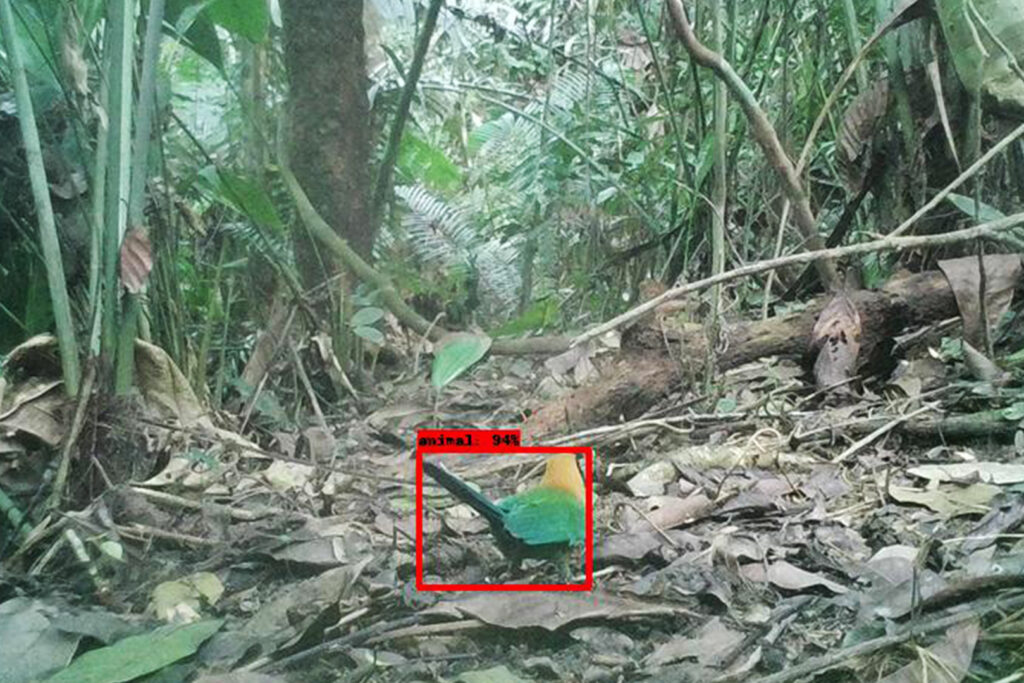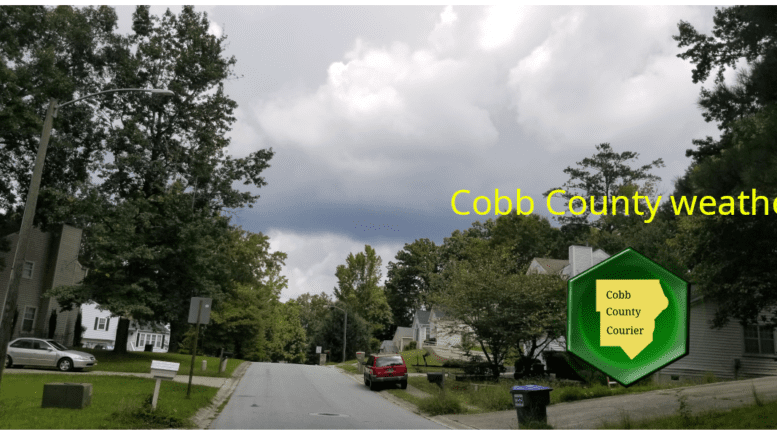How climate change and deforestation interact in the transformation of the Amazon rainforest – Nature

Report on the Interacting Impacts of Climate Change and Deforestation on the Amazon Rainforest and the Sustainable Development Goals
1.0 Executive Summary
This report quantifies the distinct contributions of global climate change and regional deforestation to the climatic transformation of the Amazon rainforest, a critical ecosystem for achieving the Sustainable Development Goals (SDGs). An analysis of atmospheric and land cover data from 1985 to 2020 across the Brazilian Legal Amazon reveals that while global emissions are the primary driver of increased greenhouse gas (GHG) concentrations, regional deforestation is a dominant factor in altering local temperature and precipitation. These changes directly threaten the integrity of the Amazon biome and undermine progress towards SDG 13 (Climate Action), SDG 15 (Life on Land), and SDG 6 (Clean Water and Sanitation). The findings underscore that preserving Amazonian forest cover is a crucial strategy for regional climate stabilization and global sustainability.
2.0 Introduction: The Amazon’s Role in Global Sustainability
The Amazon rainforest is a cornerstone of the Earth’s climate system and a vital area for the fulfillment of the 2030 Agenda for Sustainable Development. Its role in regulating hydrological, energy, and carbon cycles is intrinsically linked to several SDGs.
- SDG 13 (Climate Action): The Amazon stores 150-200 billion tons of carbon, acting as a critical buffer against global warming. Its degradation compromises global efforts to limit temperature rise.
- SDG 15 (Life on Land): As one of the most biodiverse regions on Earth, the Amazon is central to halting biodiversity loss and preventing land degradation. Deforestation directly contravenes the targets of SDG 15.2 (halt deforestation) and 15.3 (combat desertification).
- SDG 6 (Clean Water and Sanitation): The forest’s influence on continental weather patterns and water cycling is essential for maintaining freshwater resources, aligning with the objectives of SDG 6.6 to protect water-related ecosystems.
However, the combined pressures of global climate change and localized deforestation are disrupting these functions, transitioning parts of the forest from a carbon sink to a source. This report aims to disentangle these two drivers to inform effective mitigation strategies that support the SDGs.
3.0 Analysis of Climatic Drivers: Global Change vs. Regional Deforestation
A statistical analysis was conducted on long-term data for 29 areas within the Brazilian Legal Amazon to isolate the impacts of global climate trends from those of regional forest loss. The study focused on the dry season, where the effects of deforestation are most pronounced.
3.1 Impact on Greenhouse Gas Concentrations
Changes in atmospheric GHG mixing ratios are overwhelmingly dictated by global trends, a key concern for SDG 13 (Climate Action).
- Carbon Dioxide (CO2): Over the 35-year period, CO2 levels increased by approximately 87 ppm. Global emissions accounted for over 99% of this rise.
- Methane (CH4): Methane levels increased by approximately 173 ppb, with global changes contributing 99.9% of this increase.
While deforestation has a minor direct impact on ambient GHG concentrations at this scale, its role in reducing the Amazon’s capacity as a carbon sink is a critical feedback loop that accelerates global climate change.
3.2 Impact on Regional Temperature and Precipitation
Deforestation demonstrates a significant and detrimental impact on regional meteorological conditions, directly affecting the resilience of ecosystems and communities and hindering progress on SDG 15 (Life on Land) and SDG 11 (Sustainable Cities and Communities).
- Maximum Surface Air Temperature:
- A total increase of approximately 2.0°C was observed during the dry season over 35 years.
- Deforestation was responsible for 16.5% of this warming (a rise of 0.39°C).
- Global climate change contributed the remaining 83.5% (a rise of 1.63°C).
- Dry Season Precipitation:
- A total reduction of approximately 21 mm per dry season was recorded.
- Deforestation was the primary driver, accounting for 74.5% of this decline (a loss of 15.8 mm).
- Global climate change contributed 25.5% of the reduction (a loss of 5.2 mm).
These findings illustrate that deforestation severely compromises the Amazon’s ability to regulate its own climate, creating warmer and drier conditions that threaten the stability of the entire biome.
4.0 Implications for the Sustainable Development Goals
4.1 Threat of Ecosystem Tipping Point
The synergistic effects of rising temperatures and decreasing rainfall are pushing the Amazon towards a potential tipping point, where large areas could transition into a savanna-like state. Such a transformation would be catastrophic for several SDGs:
- It would trigger a massive release of stored carbon, severely jeopardizing the goals of SDG 13 (Climate Action).
- It would cause irreversible biodiversity loss and land degradation, representing a complete failure to meet SDG 15 (Life on Land).
- It would disrupt continental water cycles, impacting agriculture, energy production, and water availability, thereby affecting SDG 2 (Zero Hunger) and SDG 6 (Clean Water and Sanitation).
4.2 Future Projections and Urgency for Action
Extrapolating current deforestation rates to 2035 suggests a continued and accelerated degradation of the Amazonian climate. By 2035, compared to 1985 levels, the region is projected to experience:
- A total temperature increase of 2.64°C.
- A rainfall reduction of 28.3 mm per dry season.
- An increase of 123.3 ppb in CO2 and 250.8 ppb in CH4.
This trajectory highlights the urgent need for intervention to prevent irreversible damage to a globally critical ecosystem.
5.0 Conclusion and Policy Recommendations
The transformation of the Amazon rainforest is a result of the interplay between global climate change and regional deforestation. While global emissions set the overarching trend for GHG concentrations, deforestation is the dominant force driving dangerous regional warming and drying, particularly during the dry season. This dynamic creates a vicious cycle that undermines the resilience of the ecosystem and threatens the achievement of the Sustainable Development Goals.
To safeguard the Amazon and advance the 2030 Agenda, the following actions are critical:
- Strengthen and Enforce Policies to Halt Deforestation: Immediate action to curb forest loss is the most effective lever for mitigating regional climate impacts and is essential for meeting the targets of SDG 15.
- Integrate Forest Conservation into Climate Strategies: National and international climate policies under SDG 13 must recognize the preservation of the Amazon as a primary climate mitigation and adaptation strategy.
- Promote Sustainable Land Use: Supporting sustainable agriculture and economic alternatives to deforestation is crucial for aligning development with environmental protection, supporting SDG 12 (Responsible Consumption and Production).
Protecting the Amazon rainforest is not merely an environmental issue; it is a fundamental prerequisite for achieving a sustainable and equitable future as envisioned by the SDGs.
Analysis of Sustainable Development Goals in the Article
1. Which SDGs are addressed or connected to the issues highlighted in the article?
The article on the Amazon rainforest’s transformation due to climate change and deforestation directly addresses and connects to several Sustainable Development Goals (SDGs). The primary SDGs identified are:
-
SDG 13: Climate Action
This is the most central SDG in the article. The entire study is dedicated to understanding and quantifying the impacts of global climate change and regional deforestation on the Amazon’s climate. It discusses rising temperatures, changing precipitation patterns, and increased greenhouse gas (GHG) concentrations, all of which are core components of SDG 13, which urges immediate action to combat climate change and its impacts.
-
SDG 15: Life on Land
The article’s focus on the Amazon rainforest, deforestation, forest degradation, and loss of a vital terrestrial ecosystem directly relates to SDG 15. This goal aims to “protect, restore and promote sustainable use of terrestrial ecosystems, sustainably manage forests, combat desertification, and halt and reverse land degradation and halt biodiversity loss.” The article quantifies forest loss (“a significant drop in forest cover, from 89.1% to 78.7%”) and discusses the severe consequences for the ecosystem’s stability and its role as a carbon sink.
-
SDG 6: Clean Water and Sanitation
While not focused on water sanitation, the article is highly relevant to the ecosystem aspect of SDG 6. It explicitly states that changes in land use and climate have led to “significant alterations in the water, energy, and carbon cycles” and a “perturbed hydrological cycle.” This directly connects to the protection of water-related ecosystems, a key component of ensuring water availability and sustainability.
2. What specific targets under those SDGs can be identified based on the article’s content?
Based on the article’s detailed analysis, several specific SDG targets can be identified:
-
SDG 13: Climate Action
- Target 13.1: Strengthen resilience and adaptive capacity to climate-related hazards and natural disasters in all countries. The article’s conclusion that understanding the interplay between climate change and deforestation is “essential for developing effective mitigation and adaptation strategies” directly supports the need for building resilience in the face of climate-related changes like droughts and temperature increases.
- Target 13.2: Integrate climate change measures into national policies, strategies and planning. The study uses data from Brazil’s Legal Amazon (BLA), noting it was chosen because it “corresponds to the official jurisdiction used in Brazil’s environmental policy and monitoring frameworks.” This highlights the connection between scientific research and the data needed for national climate policies.
-
SDG 15: Life on Land
- Target 15.1: By 2020, ensure the conservation, restoration and sustainable use of terrestrial and inland freshwater ecosystems and their services, in particular forests, wetlands, mountains and drylands, in line with obligations under international agreements. The article’s entire premise revolves around the degradation of the Amazon forest ecosystem and the disruption of its services, such as climate regulation and its role as a carbon sink.
- Target 15.2: By 2020, promote the implementation of sustainable management of all types of forests, halt deforestation, restore degraded forests and substantially increase afforestation and reforestation globally. The article provides hard data on the failure to halt deforestation, stating that from 1985 to 2020, “there was a significant drop in forest cover, from 89.1% to 78.7%.” This directly addresses the core theme of this target.
- Target 15.3: By 2030, combat desertification, restore degraded land and soil, including land affected by desertification, drought and floods, and strive to achieve a land degradation-neutral world. The article warns that continued deforestation could lead the Amazonian climate towards a “Cerrado-climate type or even worse, a Caatinga semi-arid climate type,” which is a direct reference to processes of land degradation and desertification.
-
SDG 6: Clean Water and Sanitation
- Target 6.6: By 2020, protect and restore water-related ecosystems, including mountains, forests, wetlands, rivers, aquifers and lakes. The article’s findings on how deforestation and climate change have “disrupted biosphere-atmosphere interactions, leading to significant alterations in the water, energy, and carbon cycles” and caused a “perturbed hydrological cycle” directly relate to the health and protection of the Amazon forest as a critical water-related ecosystem.
3. Are there any indicators mentioned or implied in the article that can be used to measure progress towards the identified targets?
Yes, the article is rich with quantitative data that can serve as direct indicators for measuring progress towards the identified targets.
- Forest Cover Change (Indicator for Target 15.2): The article provides a precise indicator of deforestation. It states that between 1985 and 2020, forest cover in the Brazilian Legal Amazon dropped “from 89.1% to 78.7%.” This metric directly corresponds to SDG Indicator 15.2.1 (Progress towards sustainable forest management).
- Change in Precipitation (Indicator for Targets 6.6 and 13.1): The study quantifies a key climate impact, noting a reduction in precipitation “during the Amazonian dry season” of approximately “21 mm dry season−1” over 35 years. This serves as an indicator of the degradation of water-related ecosystems and an impact of climate change.
- Change in Surface Temperature (Indicator for Target 13.1): The article measures a “2°C rise in maximum surface air temperature” over the past 35 years. This is a direct indicator of local and global warming, a central concern of SDG 13.
- Greenhouse Gas Concentrations (Indicator for Target 13.2): The study quantifies the increase in atmospheric GHG mixing ratios, noting a rise of approximately “87 ppm” for CO2 and “173 ppb” for CH4. These figures serve as indicators of the drivers of global climate change.
- Contribution of Deforestation to Climate Change (Indicator for Targets 13.2 and 15.2): The article disentangles the causes of climate impacts, providing specific indicators of how land use change affects climate. It states deforestation accounted for “74% of the ~ 21 mm dry season−1 decline” in precipitation and “16.5% of the 2°C rise in maximum surface air temperature.” These metrics are crucial for developing integrated policies that address both deforestation and climate change.
4. Table of SDGs, Targets, and Indicators
| SDGs | Targets | Indicators Identified in the Article |
|---|---|---|
| SDG 13: Climate Action | 13.1: Strengthen resilience and adaptive capacity to climate-related hazards. |
|
| SDG 13: Climate Action | 13.2: Integrate climate change measures into national policies, strategies and planning. |
|
| SDG 15: Life on Land | 15.1: Ensure the conservation, restoration and sustainable use of terrestrial ecosystems. | The article documents the disruption of the Amazon’s role as a carbon sink, with parts of the forest becoming carbon sources. |
| SDG 15: Life on Land | 15.2: Promote sustainable management of forests, halt deforestation. |
|
| SDG 15: Life on Land | 15.3: Combat desertification, restore degraded land. | The analysis suggests a potential climate transformation of the Amazon towards a “Cerrado-climate type or even worse, a Caatinga semi-arid climate type.” |
| SDG 6: Clean Water and Sanitation | 6.6: Protect and restore water-related ecosystems. |
|
Source: nature.com

What is Your Reaction?
 Like
0
Like
0
 Dislike
0
Dislike
0
 Love
0
Love
0
 Funny
0
Funny
0
 Angry
0
Angry
0
 Sad
0
Sad
0
 Wow
0
Wow
0
















































/environment-climate-change-and-health-(ech)/water-sanitation-hygiene-and-health-(wsh)/landfill-tuvalu-36092.tmb-1200v.jpg?sfvrsn=5c21fe40_1#)

.jpg.webp?itok=0ZsAnae9#)

























